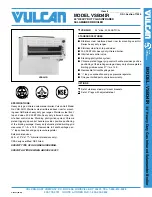
Inspection and maintenance
|
87
6 720 643 068 (2011/06)
Copyright (optional information)
14.1.9 Expansion vessel
Annual inspection of the expansion vessel is required.
B
Depressurize the appliance.
B
If necessary, adjust the expansion vessel pre-charge
pressure to the static head of the heating system
(
Æ
page 37).
14.1.10 Setting the boiler water pressure
B
If the indicator is below 14.5 psi (1 bar) when the
system is cold, top up the water. The indicator must be
between 14.5 psi (1 bar) and 21.75 psi (1.5 bar).
B
If the pressure is not held, check the expansion vessel
and heating system for leaks.
14.1.11 Testing system water quality
B
Take a representative sample of the system water and
analyze pH using a pH meter or pH test strips.
B
If the value is outside of the permitted range, drain the
system, flush, and refill with fresh water to prevent
system damage or leaks.
B
If the fill water does not meet the requirements of
page 35, treat the water to bring it within the
permissible range.
B
If antifreeze is being used in the system, check the frost
protection properties to ensure the site specific
requirements are met.
14.1.12 Inspecting electrical wiring
B
Check electrical wiring for mechanical damage and
replace defective cables.
Display on the pressure gauge
14.5 psi
(1 bar)
Minimum filling pressure (when system
is cold)
14.5 psi to
21.75 psi
(1 bar to
1.5 bar)
Optimal filling pressure
30 psi
(2.07 bar)
Maximum pressure at maximum heat-
ing water temperature must not be
exceeded (safety valve will spill).
Tab. 32 Operating pressure
If using a hose to fill the heating system, prefill
the hose with water to prevent air being
introduced into the system.
pH-value
Water preparation
7-8.5
Not needed
4.5-7
Required
Tab. 33 Water preparation for filling and maintaining the
heating system (pH-value)
















































